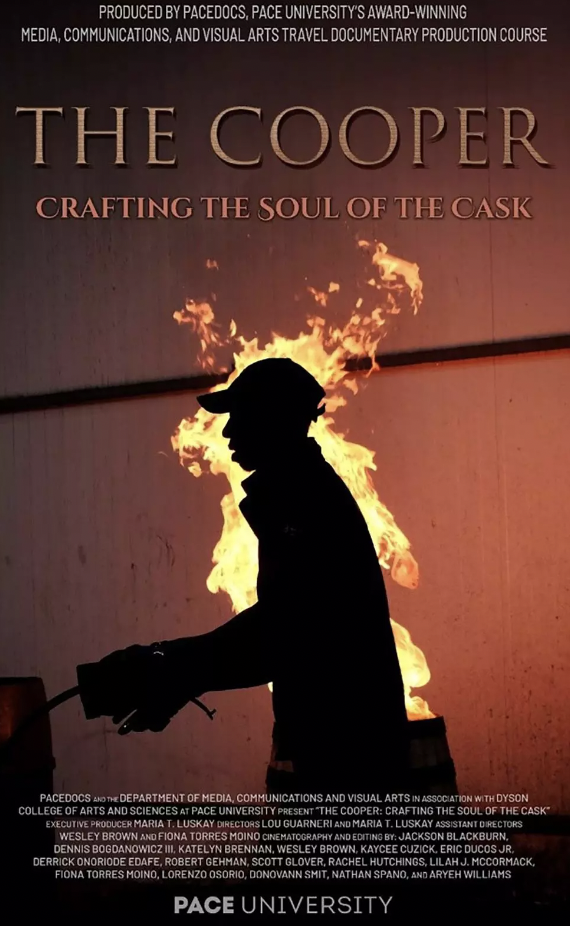Pace University’s Producing the Documentary course students traveled to Spain to film a new documentary this year. As part of the annual PaceDocs program, Media, Communications, and Visual Arts (MCVA) students travel domestically or abroad to document problems, situations, and traditions. The students, with the help of Professors Maria Luskay and Lou Guarneri, traveled to the Andalusia region of Spain during spring break to explore where Spain’s rich wine comes from and how it all starts in the cask.
The premiere on May 2 began with a night of mingling between students, their professors, alumni, family, and guests. At 7:00 PM, everyone was led downstairs to the screening room. Dean Tresmaine Grimes of the Dyson College of Arts & Sciences acknowledged the MCVA students’ hard work and dedication. Pace’s President Marvin Krislov offered similar praises and introduced Professor Maria Luskay, who talked about the journey of making this film and how difficult it is to make any movie. It’s a large undertaking requiring 100% effort from everyone involved.
The documentary, a unique exploration of the wine-making process, detailed the steps involved. It featured numerous insightful interviews with the workers and locals of the region, delving into the cultural significance of the wine. Historical pictures were also included, with a narrator explaining their relevance to the present.

A Q&A session was held following the screening, offering a deeper understanding of the film’s creation. Some of the questions and responses are shared below:
Q: How was the allocation of work distributed?
Professor Lou Guarneri: Some people are better at certain jobs than others, and this class gives everyone a chance to shine differently. For instance, some people who haven’t taken as many cinematography classes could focus on writing and research. I tell myself this person knows this camera, and this person knows that camera; we could make those decisions based on people’s strengths and weaknesses.
Q: What role did the score play? How did it make it into the project?
Fiona Torres Moino: We wanted the music to play a meaningful role. Flamenco is one of the most popular music styles, so we all wanted to find a musician from Andalusia. I went on Instagram and found this guy, Daniel Fernandez. He contacted one of his colleagues who’s a piano and flamenco player. He was helpful throughout the editing process by recommending songs for us in certain scenes. We couldn’t have done this without him.
Q: How did you deal with any technical difficulties? Were there a lot of them?
Robert Gehman: For one, a drone wasn’t working. I was trying to switch from 1080p to 4K, but there was no signal for it to move sideways. I was at eye level and wouldn’t stay still; it was coming straight toward my face, and Professor Guarneri smacked it away from my face. So there was some bloodshed there. The drone then flew straight into the barrels, and we lost a few propellers on Day 1, but the drone survived, and we did get the rest of the shots we needed.
*NOTE: The questions have been edited for clarity purposes.
For more information about PaceDocs, click here to visit their website. You can also check out their Instagram page here, which has more behind-the-scenes content. A Spanish version of the documentary, titled “El Tonelero: Creando el Alma del Barril” will premiere in Montilla, Spain on May 13th. This will mark the first time a PaceDocs film is released in two languages.
Looking ahead, it will be intriguing to see where and what PaceDocs films next year. Congratulations to everyone involved. The hard work paid off extremely well.

